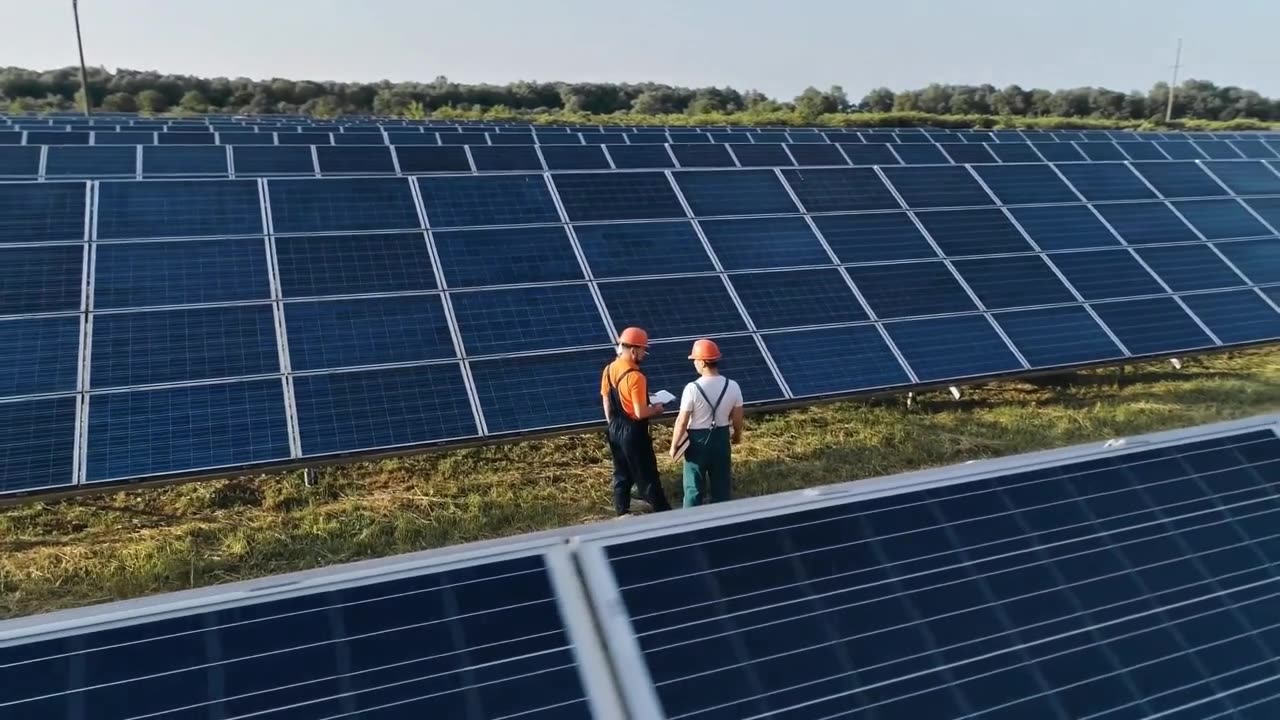Premium Only Content

Pushing Past Limits: Tandem Solar Cells Achieve Over 20% Efficiency
A tandem cell was constructed using perovskite and antimony selenide.
A research team has demonstrated for the first time a proof-of-concept tandem solar cell using antimony selenide as the bottom cell material and a wide-bandgap organic–inorganic hybrid perovskite material as the top cell material. The device achieved a power conversion efficiency of over 20 percent. This study shows that antimony selenide has great potential for bottom cell applications.
The research was recentlys published in the journal Energy Materials and Devices.
Photovoltaic technology, which harnesses sunlight and converts it into electricity, is popular because it provides a clean, renewable energy source. Scientists continue to work to improve the power conversion efficiency, or the measure of efficiency, in solar cells. They have achieved power conversion efficiencies of over 20 percent in conventional single-junction solar cells. To achieve power efficiency above the Shockley-Queisser limit in single-junction solar cells would require much greater costs. However, the Shockley-Queisser limit of single-junction solar cells can be overcome through the fabrication of tandem solar cells. With tandem solar cells, researchers are able to gain a higher energy efficiency by stacking solar cell materials on top of each other.
-
 2:05:26
2:05:26
TimcastIRL
3 hours agoTrump NUKES IRS, Mass Fed Layoffs, Democrats REVOLT Over 200k Layoffs w/Roma Nation | Timcast IRL
72.9K64 -
 LIVE
LIVE
Talk Nerdy 2 Us
1 hour ago🔥 Talk Nerdy 2 Us – Feb 14th: THE INTERNET IS ON FIRE! 🔥
787 watching -
 1:39:03
1:39:03
Roseanne Barr
7 hours ago $2.99 earnedAdam Carolla! | The Roseanne Barr Podcast #87
80.1K16 -
 1:29:04
1:29:04
Glenn Greenwald
6 hours agoTrump, Vance & Musk Announce a Radically New Foreign Policy Framework; Prof. Norman Finkelstein on Gaza's Future, the Cease-Fire Deal & Fallout from the U.S./Israeli War | SYSTEM UPDATE #407
77.8K63 -
 4:15:00
4:15:00
Nerdrotic
8 hours ago $4.85 earnedCaptain Falcon America REVIEW, Disney Ending DEI? Rings of Power RETURNS | Friday Night Tights #341
152K22 -
 9:34:03
9:34:03
FusedAegisTV
16 hours agoMario Galaxy, Batman, Real Talk/Politics, & MORE - V-Day 💗 Friday Variety Stream!
16.9K1 -
 1:10:49
1:10:49
Vigilant News Network
4 hours agoRFK Jr. Drops a Stunning Announcement | The Daily Dose
38.5K26 -
 49:49
49:49
Candace Show Podcast
7 hours agoEXCLUSIVE: Blake & Ryan’s Desperate Legal Strategy Exposed! | Candace Ep 147
156K123 -
 1:32:20
1:32:20
2 MIKES LIVE
5 hours ago2 MIKES LIVE #180 with guest Kyle Rittenhouse!
33.8K2 -
 9:40
9:40
Tactical Advisor
10 hours agoBest Home Defense Shotgun Build | Genesis Gen 12
31.2K